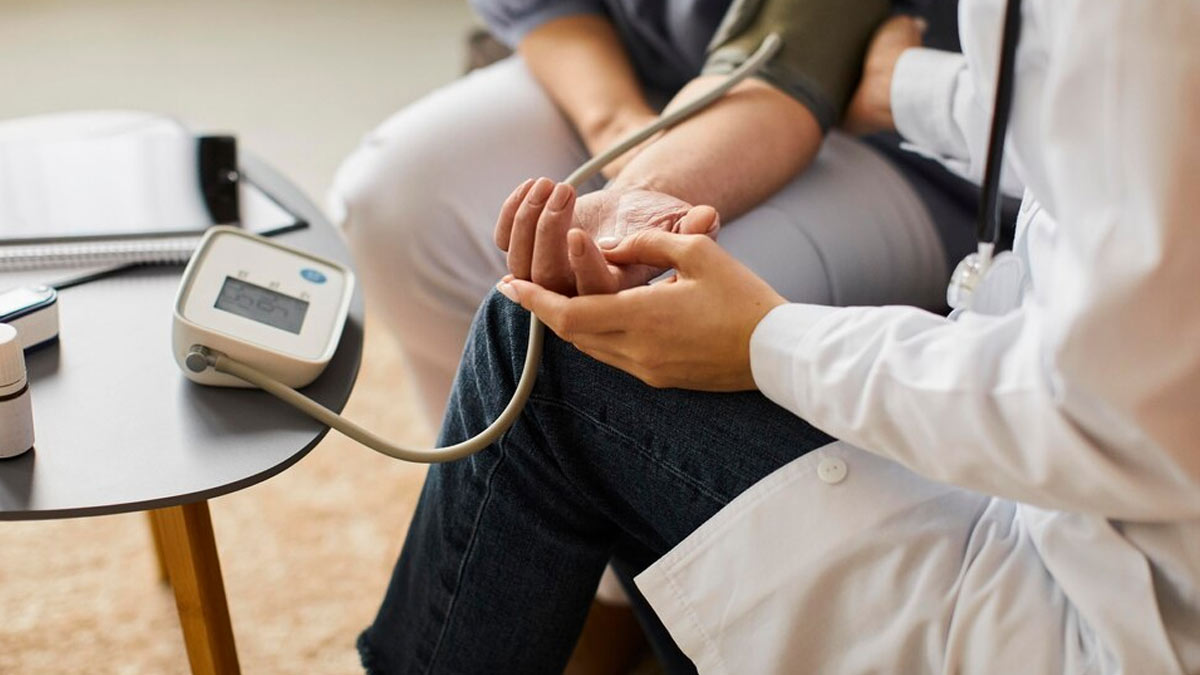
High blood pressure, or hypertension, is one of the leading contributors to heart disease worldwide. It affects an estimated 128 crore people globally aged between 30 and 79 years, according to the World Health Organization (WHO).
Table of Content:-
In an interaction with the OnlyMyHealth team, Dr Reshu Agarwal, Consultant - Internal Medicine, Manipal Hospital, Baner, Pune, shared that the majority of people with high blood pressure remain asymptomatic, meaning they do not have any symptoms, and are mostly diagnosed during routine checks. Many people are unaware of their condition and do not understand the implications of high blood pressure or when they should be concerned. To decode the same, here’s what you need to know.
What Are Normal Blood Pressure Levels?

In general, blood pressure readings are measured in two numbers: systolic and diastolic. Systolic refers to the pressure when your heart beats and pushes blood out to the arteries, whereas diastolic represents the pressure when the heart relaxes between beats. Keeping this in mind, here's what's considered normal and what indicates high blood pressure:
Normal: 120/80 millimetres of mercury (mmHg) or less.
Elevated: Systolic pressure between 120-129 mmHg and diastolic pressure less than 80 mmHg.
Hypertension: High blood pressure is categorised into two stages, namely: stage 1 hypertension, diagnosed when systolic pressure reads between 130 and 139 mmHg or your diastolic pressure is between 80 and 89 mmHg; and stage 2 hypertension, which occurs when systolic pressure reaches 140 mmHg or higher or your diastolic pressure reaches 90 mmHg or higher.
When Should You Seriously Worry About Blood Pressure Levels?

According to Dr Agarwal, you should seriously worry about your blood pressure:
- When it's consistently high
- If you experience symptoms such as a severe headache, vision changes, or shortness of breath
- If BP remains high despite lifestyle changes and medications
- If you have a family history of hypertension, diabetes, heart issues, stroke, and obesity
Other common symptoms are headaches, blurred vision, dizziness, fatigue, chest heaviness, shortness of breath, nausea and vomiting, nose bleeds, and blood spots in the eyes.
Should Temporary Fluctuations Concern You?
It is important to note that temporary fluctuations in blood pressure levels, also called labile hypertension (blood pressure that fluctuates between normal and high), do not necessarily indicate a higher risk of hypertension.
Possible causes include anxiety and stress and the consumption of too much caffeine or excessive salt in the diet, said Dr Agarwal, adding that controlling the risk factor mostly results in BP coming back to the normal range.
However, the doctor noted that long-term, frequent, or extreme fluctuations may contribute to hypertension over time.
Also Read: Hypertension Risk: How Much Salt Should You Consume To Keep Blood Pressure In Check
How To Reduce Your Risk Of High Blood Pressure

Listing some of the effective ways to reduce the risk of high blood pressure, Dr Agarwal shared:
- Maintain a healthy body weight.
- Have a balanced diet; reduce your intake of saturated fat, red meat, salt, oil, junk food, and packaged food.
- Eat plenty of seasonal fruits and vegetables.
- Exercise regularly
- Quit smoking and limit alcohol intake.
- Manage stress by doing meditation, yoga, and deep breathing exercises.
- Monitor your blood pressure regularly.
- Take the medicines as prescribed by your physicians and do timely follow-ups.
Conclusion
Blood pressure levels fluctuate throughout the day due to various factors. However, it is important to know when you should take them seriously. While temporary changes in your blood pressure levels do not necessarily indicate a high or low blood pressure, long-term and frequent spikes can be a source of alarm. The key is to get yourself examined by a doctor and mention any symptoms if you have them.
Also watch this video
How we keep this article up to date:
We work with experts and keep a close eye on the latest in health and wellness. Whenever there is a new research or helpful information, we update our articles with accurate and useful advice.
Current Version